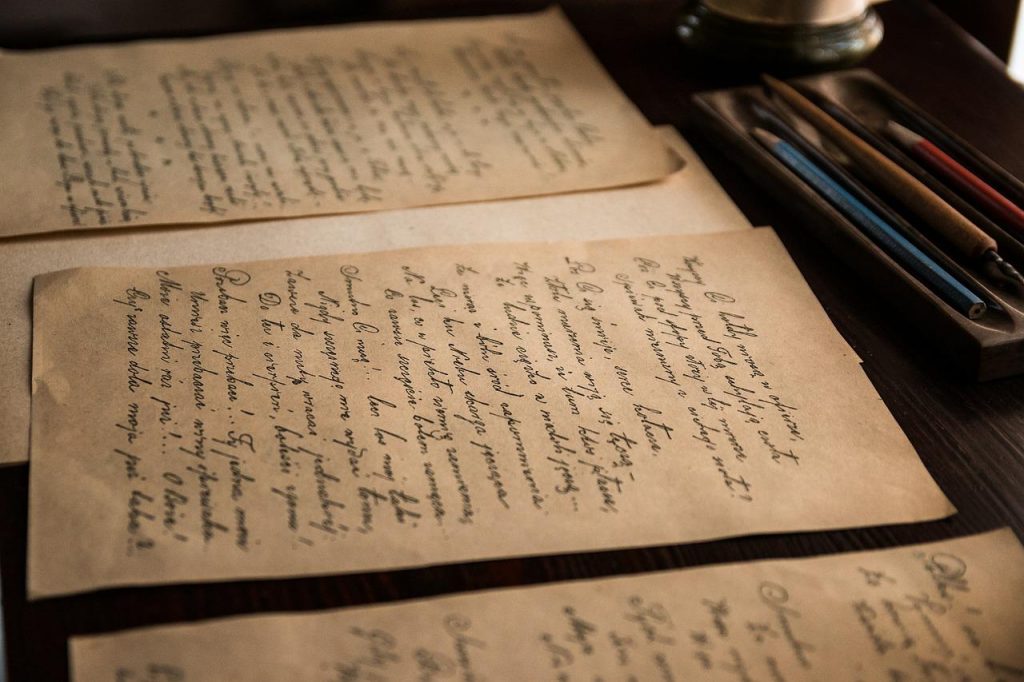In today’s digital age, the prevalence of digital devices has increased, but the significance of good handwriting skills persists in various aspects of life. Research suggests that handwriting can enhance learning and memory retention and promote faster processing of information by the brain. Developing strong handwriting skills can also improve concentration and foster better body alignment. By focusing on the task at hand and engaging multiple body parts, children can enhance their ability to concentrate effectively.
Math & ELA | PreK To Grade 5
Kids see fun.
You see real learning outcomes.
Watch your kids fall in love with math & reading through our scientifically designed curriculum.
Parents, try for free Teachers, use for free
In this blog, we will try to understand the intricacies of handwriting and explore ten effective tips on how to improve handwriting skills of children.
Explore writing games!
First, Analyze Your Handwriting
Analyzing your handwriting is a crucial first step towards understanding how to improve handwriting skills. By understanding the specific challenges and areas of improvement, you can take appropriate measures to enhance your handwriting. This section will provide you with 4 useful tips for analyzing your handwriting style and addressing any issues that may arise.

1. Check the Handwriting of Other People
Comparing your handwriting with others can help you gauge your skills and understand how to get better handwriting. Observe your child’s handwriting compared to their classmates, and assess your own handwriting about your colleagues’. This comparison will better understand your current level and guide you in choosing suitable methods to improve your handwriting.
2. Let Other People Read Your Writing
Ask different people to read what you have written to assess the readability and structure of your letters. Each individual has different reading abilities, so obtaining feedback from multiple sources can help you gain a comprehensive analysis of your skills. Their feedback will be valuable in identifying areas for improvement.
3. Consult Teachers
Involving your child’s teachers in the handwriting improvement process can be highly beneficial in learning how to get better handwriting. They possess valuable experience and can identify specific problem areas in your child’s handwriting. Moreover, teachers can offer helpful suggestions and proper handwriting practices to enhance their skills.
4. Observe Your Posture
While focusing on the end product is essential, paying attention to your posture and technique while writing is equally important. Take the time to observe yourself and your child while writing. Correcting your grip on the pencil or ensuring you apply appropriate pressure on the pen can significantly impact the quality of your handwriting. These small adjustments can contribute to better handwriting.
“Your handwriting is a reflection of your unique personality and style.” – Ralph Waldo Emerson
By following these tips and actively analyzing your handwriting, you can uncover the underlying causes of poor handwriting and make targeted improvements. You can achieve better handwriting skills with consistent practice and the right techniques.
Related Reading: How Can Teachers Help English Language Learners
Traits of Good Handwriting Style: Key Characteristics for Neat Handwriting
It is important to understand the traits that contribute to a good handwriting style to develop neat handwriting and learn how to have neat handwriting. These traits enhance the legibility and overall appearance of your handwriting. Let’s explore the vital characteristics of good handwriting:
“Your handwriting is a reflection of your unique personality and style.” – Ralph Waldo Emerson

Here are vital characteristics of good handwriting style:
1. Letter shape: Good handwriting maintains consistent and legible letter shapes. Each letter should have a specific form that is easily recognizable and clear.
2. Letter spacing: Proper spacing between letters is crucial for readability. Whether you connect letters like in cursive writing or leave a reasonable amount of space, maintaining consistent letter spacing throughout your writing ensures a cohesive and organized appearance.
3. Letter slope: The angle or slant at which letters are formed is an important aspect of handwriting. Most English letters have a rightward slant. Keeping your hand relaxed and allowing the letters to slope towards the right naturally contributes to good handwriting practice.
4. Pressure on the paper: Controlling the pressure exerted on the paper is essential. Excessive pressure can cause impressions on subsequent pages and disrupt the writing flow. Maintaining a moderate and consistent pressure enhances the fluidity of your handwriting.
5. Connecting strokes: Connecting strokes between letters creates a seamless, flowing handwriting style. Ensuring that each letter is written in a continuous motion contributes to the overall aesthetic of your handwriting.
6. Dots and cross strokes: The placement and consistency of dots in lowercase letters like “j” and “i” and cross strokes in letters like “t” and “f” are important for achieving good handwriting. Properly placed and consistent dots and cross strokes enhance the clarity and precision of your writing.
7. Space between the words: Besides maintaining appropriate letter spacing, good handwriting also incorporates consistent spacing between words. Adequate word spacing enhances readability and helps organize your written work effectively.
8. Consistent flow: A good handwriting style maintains a consistent flow throughout the entire piece of writing. Each letter should have the same size and shape, contributing to a harmonious and visually appealing result.
How to Improve Handwriting: 10 Easy Ways for Better Penmanship

Does your child have messy handwriting? Is poor handwriting making your child conscious and less confident in class?
In that case, you must use innovative ways to improve your child’s handwriting early. That is because once your child adopts a wrong handwriting style and uses it over the years, it will get harder and harder to correct.
Research suggests this happens because the brain’s prefrontal cortex, where working memory is stored, is less developed in children than in adults. Thus, a child can learn how to improve handwriting faster than adults.
So, whenever you spot poor handwriting in your child’s writing, it would help if you immediately take action. Here’s how to improve the handwriting of your child:
1. Select the Right Paper and Pen
For the best handwriting, it is essential to select the right stationery. In addition, a pencil and pen your child uses to write must have the right size and shape.
A pen or pencil that is too thin or too thick can easily be the cause of your child’s messy handwriting. Instead, select a pencil that your child can hold properly. For example, toddlers have small hands with a less firm grip, so a thick and short pencil is perfect for them.
Moreover, golf-sized pencils let children form a proper grip rather than using their entire fists to hold a big pencil.
Besides the pencil, ensure that the paper your child is writing on has the right thickness and texture. Again, too thick or too thin paper can make children’s handwriting suffer.
2. Help Children Achieve the Proper Grip
The way your child holds a pencil determines their handwriting quality. Thus, you should ensure that your child has a proper grip on their pencil.
For preschoolers and kindergarteners, the best grip is the “tripod grasp.” Your child should hold a pencil between the thumb and index finger while the middle finger rests on it. Meanwhile, the ring and small finger curl to the palm.
To help your child form a comfortable tripod grasp, give them these activities:
- Use small crayons
- Cut some paper with plastic scissors
- Thread beads
- Finger painting
- Use tweezers
- Build blocks
A solid and comfortable grip on a writing instrument is essential for good handwriting. Therefore, if your child struggles with the tripod grasp, try other grasps like the cylindrical grasp, digital grasp, etc.
3. Hold Their Hand
Do you find words imprinted on the blank pages of your child’s notebook? This is a sign of stress. It shows that your child may be writing under stress and is applying too much pressure, which is not good for their handwriting and mental state.
So, you should help your child apply accurate pressure while writing. For this, you might have to do a little hand-holding. Grab your child’s hand while they write and show them how much pressure they should apply to write well.
Moreover, create a relaxing environment for your child. They should not feel stressed or uncomfortable while writing because it will reflect their writing flow.
4. Form a Writing Speed
Speed is a crucial factor in writing. If your child writes too fast, they can lose control and not form correct letter shapes. On the contrary, if your child writes too slowly, they might be unable to complete their school assignments on time.
Initially, you should allow your child to take their time to write. Let them think and process information properly before writing.
Gradually, when your child learns to write letters that are consistent and the same size, you can ask them to speed up their writing. For example, you can give them a timeline to write certain lines. It will improve their writing speed, and they can better control their motor movements.
5. Create a Fun Writing Environment
Your child should not feel nervous while writing. Instead, they should feel happy and motivated to write.
Children always feel encouraged when they try new things. So, instead of giving them plain paper and pencils to write, create an environment where your child can learn to write while having fun. For example, give your children colorful crayons and paper to practice writing. You could also get a kiddie table and chair for your child to sit in the right posture for writing.
6. Identifying Underlying Issues
Don’t force your child to improve their handwriting skills. Instead, try to understand why your child struggles to write neat words.
Several reasons can impact a kid’s handwriting. For instance, low confidence can push the child to write poorly. Often, children use messy writing to cover up their spelling or grammatical mistakes.
Moreover, children suffering from sensory disorders also find it hard to write. For example, some kids on the autistic spectrum may find it challenging to recognize shapes, leading to poor handwriting.
Once you understand why your child’s handwriting is untidy, you can better help them.
7. Work on Motor Skills
Physical and mental coordination is essential to writing well. Thus, enhance your child’s motor skills so they can hold pencils properly to write neatly.
Motor skills also help children maintain the right writing posture. Also, it can improve agility and coordination to develop a beautiful handwriting style.
There are some non-writing-related activities that you can try to improve your child’s motor skills, like:
- Using cutlery
- Throwing and catching a ball
- Making clay toys
- Playing Jenga, and many more!
8. Befriend Alphabets
Usually, children struggle to form a consistent writing flow. They often write all the letters in different sizes with irregular spacing.
So, helping your child understand the formation and slant of each alphabet will go a long way in improving their handwriting. Teach them how much size, width, and distance each letter will take on paper and help them distinguish between uppercase and lowercase letters with letter writing books. These books come with letter tracing that your child can use to learn each letter’s curves and strokes.
9. Read More
Reading well-structured words can help children understand letter formation and spacing. Encourage your child to read more and provide interactive reading materials that capture their attention and interest.
10. Practice, Practice, and Practice
Handwriting is an art that requires constant practice to master. So, make it a target for your child to write a page daily. You may need to use innovative approaches to motivate your child to do this daily exercise, but it will be well worth it.
To keep it engaging, introduce variety by taking them to write on different surfaces like sand at the beach or using easy-to-clean markers on the wall or fridge. Be creative in motivating your child to embrace regular handwriting practice.
Related Reading: Amazing Writing Prompt For Kids To Improve Confidence
Conclusion: How to Improve Handwriting
In conclusion, improving handwriting skills is not only beneficial for children but for individuals of all ages. A neat and legible handwriting style enhances academic performance, boosts concentration, and leaves a lasting impression. By following the practical tips and strategies outlined in this blog on improving handwriting, you can set your child on the path to developing beautiful penmanship. Remember to select the right stationery, help them achieve the proper grip, provide guidance and support, and create a fun and motivating writing environment.
Grab those colorful crayons, select the perfect paper, and let the ink flow smoothly. Your child’s handwriting will become a masterpiece with dedication, practice, and a sprinkle of creativity. Remember, good handwriting is a skill that will serve them well throughout their lives. Let’s make their handwriting shine and leave a lasting impression on the world. Happy writing!
Related Reading: 55 Best Positive Affirmations for Kids to Improve Confidence & Belief
Frequently Asked Questions (FAQs)
What causes poor handwriting in children?
Poor handwriting in children can be caused by various factors, including lack of fine motor skills development, incorrect grip on the writing instrument, weak hand and finger muscles, poor posture while writing, and lack of practice or guidance.
How can a 13-year-old improve handwriting?
A 13-year-old can improve handwriting by practicing regularly, using the correct grip and posture, focusing on letter formation and consistency, and seeking guidance from teachers or handwriting resources. Exercises such as writing drills, tracing letters, and using handwriting worksheets can also help.
Can handwriting be improved?
Yes, handwriting can be improved with practice, guidance, and adopting proper techniques. Individuals of any age can enhance their penmanship skills by analyzing their handwriting, identifying areas for improvement, and consistently practicing good handwriting habits.
What age can you improve handwriting?
Handwriting can be improved at any age. While it may be easier to develop good handwriting habits during childhood when fine motor skills are still developing, individuals of any age can improve their handwriting through practice, proper technique, and perseverance.
























